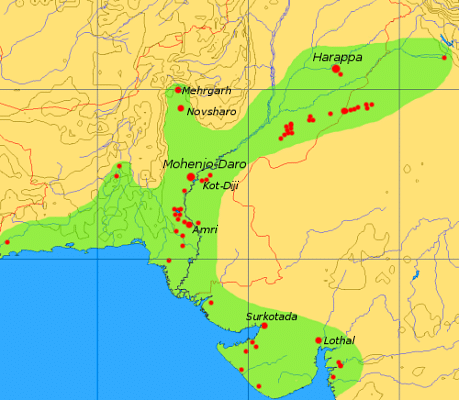Definition
Aryan - A misused term
The original meaning of the term is unknown and different meanings have been proposed, the most common being nobleman. During the 19th century CE, it was proposed that this was not only the Indo-Iranian tribal self-designation but also the self-designation used by the ancestors of all Indo-Europeans, which is a theory no longer accepted. Aryan then came to be used as a synonym of Indo-European. Some time later it was further proposed that the ancestors of the Indo-European people had their homeland located in northern Europe, implying that Indo-Europeans were originally of a Nordic racial type. Thus, Aryandeveloped yet another, purely racial meaning, probably one of the most familiar meanings today.
The Aryan Migration
Before the time of the Aryan migration into the Indian subcontinent, there was a highly developed civilization in ancient India known as the Indus Valley Civilization, which was located in what is Pakistan and northwest India today, on the fertile flood plain of the Indus River and its vicinity. The earliest evidence of religious practices in this area dates back approximately to 5500 BCE, farming settlements began around 4000 BCE, and around 3000 BCE there appeared the first signs of urbanization. By 2600 BCE, dozens of towns and cities had been established and between 2500 and 2000 BCE the Indus Valley Civilization was at its peak. The evidence suggests that the Indus Valley Civilization had social conditions comparable to Sumeria and even superior to the contemporary Babylonians and Egyptians.
By 1500 BCE the Aryans migrated into the Indian subcontinent. Coming from central Asia, this large group of nomadic cattle herders crossed the Hindu Kush Mountains and came in contact with the Indus Valley Civilization. This was a large migration and used to be seen as an invasion, which was believed by some scholars to be behind the collapse of the Indus Valley Civilization; this hypothesis is not unanimously accepted today.

Today scholars have a different understanding of how things developed. We know that a process of decay was already underway in 1800 BCE; some say that the Saraswati River was drying up, others that the region suffered catastrophic floods. The consequences of either event would have had a catastrophic effect on agricultural activity, making the economy no longer sustainable and breaking the civic order of the cities. The evidence supporting the decline of the Indus River Civilization is compelling: Writing started to disappear, standardized weights and measures used for trade and taxation purposes fell out of use, the connection with the Near East were interrupted, and some cities were gradually abandoned.
In Myth & Literature
Linguistic studies have shown that as the Aryans migrated into the Indian subcontinent, the Aryan language gained ascendency over the local languages. They also gradually adopted an agricultural lifestyle which was widely established by around 1000 BCE. Despite the fact that we have no historical records of this periods, we have a mythical record in the form of religious literature known as The Vedas, one of the most important religious books in Indian history. Stories about military conflicts and other hostilities are recorded in the Vedas, but the historical reliability of this episodes is uncertain.


0 Comments